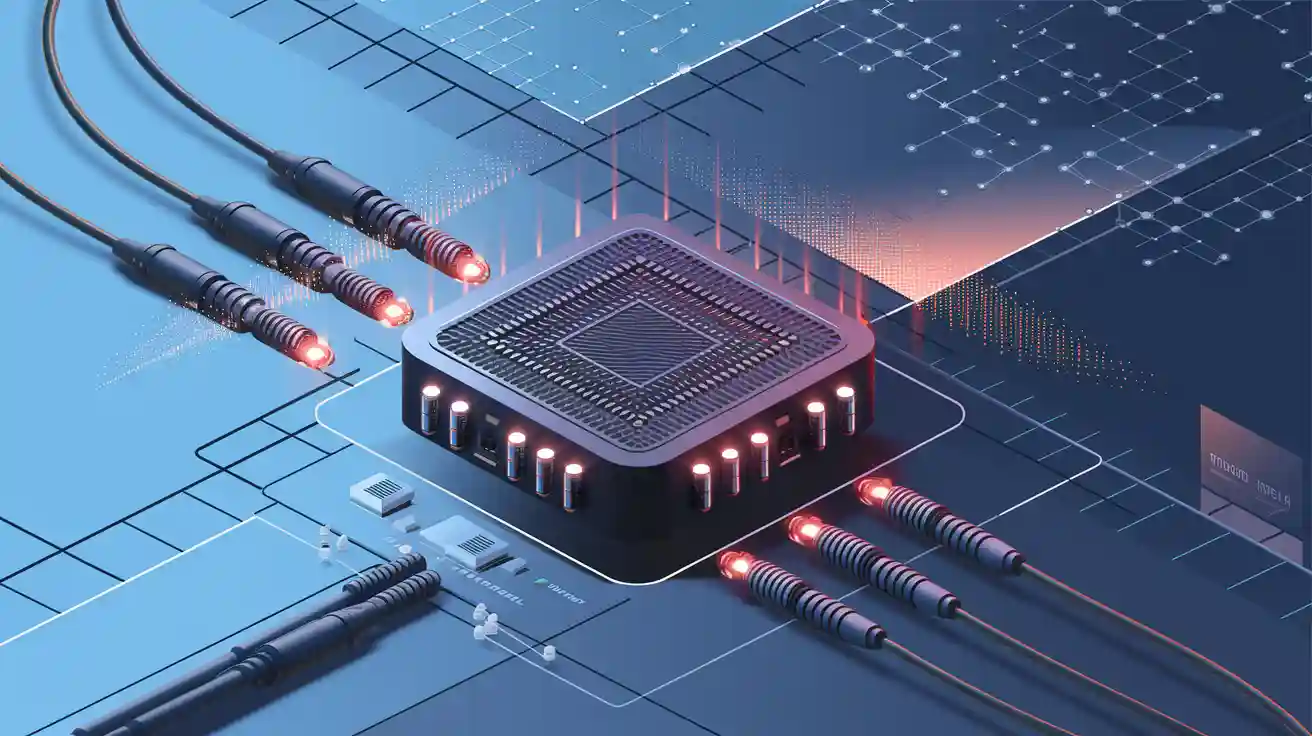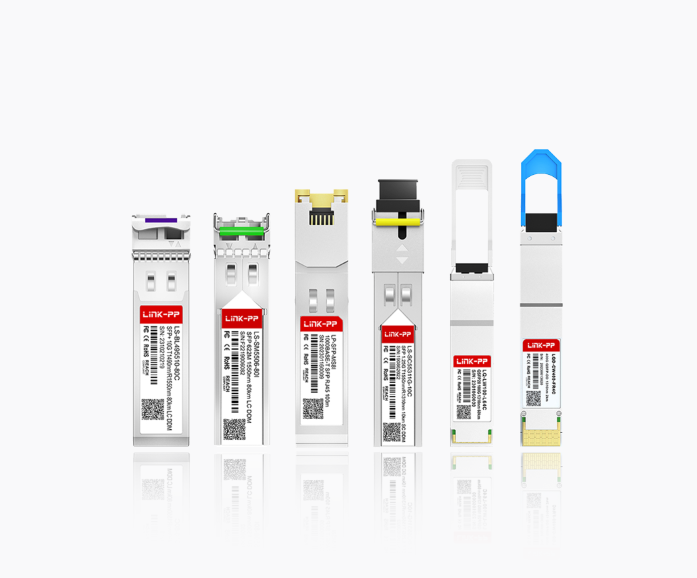
The relentless surge of Artificial Intelligence (AI), encompassing everything from large language models like ChatGPT to real-time computer vision and autonomous systems, is fundamentally reshaping industries. Yet, beneath the sophisticated algorithms lies a critical, often unsung, physical infrastructure hero: the optical transceiver. These compact modules are the high-speed, high-bandwidth lifelines connecting the massive compute and storage resources AI demands. Understanding their role is key to building efficient, scalable AI systems.
Key Takeaways
Optical modules convert electrical signals into light to move data quickly and reliably in AI systems, enabling fast and smooth data processing.
Using advanced optical modules boosts AI system speed and bandwidth, helping handle large data loads with low delay and high efficiency.
Optical modules reduce power consumption and improve system stability, allowing AI systems to run longer with fewer interruptions.
These modules play a key role in data centers, AI servers, manufacturing, and communication networks by supporting high-speed, reliable connections.
Future optical module technologies will offer even higher speeds and better integration, helping AI systems process more data with less power.
The AI Data Deluge: Why Copper Falls Short
AI, particularly deep learning, thrives on vast datasets and complex neural networks. Training these models involves:
Massive Data Movement: Transferring terabytes or petabytes of training data between storage systems (HDDs, SSDs) and GPU/TPU clusters.
Intense Interconnectivity: Facilitating high-speed communication between thousands of processors (GPUs/TPUs) within a single server rack or across multiple racks during distributed training. This is known as the AI cluster interconnect.
Low-Latency Imperative: Minimizing communication delay between processors is crucial for efficient parallel computation. High latency drastically slows down training times.
Energy Efficiency: AI data centers consume enormous power. Every watt saved in data transmission contributes to overall operational efficiency and sustainability.
Traditional copper cabling simply cannot meet these demands over the required distances (beyond a few meters) without significant signal degradation, power consumption, and physical bulk. This is where high-speed optical modules become indispensable.
Optical Transceivers: The Photonic Engine of AI
Optical transceivers convert electrical signals from servers and switches into optical signals (light) for transmission over fiber optic cables, and vice versa at the receiving end. For AI workloads, they offer the essential advantages:
Extreme Bandwidth: Modern modules like 400G, 800G, and emerging 1.6T provide the necessary pipes for moving colossal datasets and facilitating GPU-to-GPU communication. Look for high-bandwidth optical modules for AI.
Long Reach: Fiber optics transmit data over kilometers with minimal loss, enabling flexible data center design and connectivity between geographically dispersed AI resources (like distributed training clusters or cloud access).
Low Latency: Optical transmission inherently offers significantly lower latency compared to electrical signals over distance, critical for synchronizing parallel AI computations. Low-latency transceivers are non-negotiable for AI performance.
High Density: Compact form factors (like QSFP-DD, OSFP) allow packing immense bandwidth into limited switch faceplate space, optimizing rack density.
Power Efficiency: While consuming power themselves, advanced optical modules offer a better watts-per-gigabit ratio than copper for high-speed, longer-distance runs, contributing to power-efficient AI infrastructure.
Key Optical Transceiver Requirements for AI Infrastructure
Not all transceivers are created equal for the rigors of AI. Specific characteristics are paramount:
Feature | Why Critical for AI | Example Form Factors |
|---|---|---|
Bandwidth | Handle massive dataset transfer & GPU comms | 400G QSFP-DD, 800G OSFP |
Low Latency | Minimize delays in parallel processing sync | <1us designs, optimized DSP |
Power Efficiency | Reduce overall data center energy footprint | Advanced Coherent, CDR tech |
Thermal Performance | Stable operation in dense, hot AI server racks | Robust heat dissipation |
Reach | Connect racks, rows, buildings, campuses | SR (<100m), DR (500m), FR/ZR (up to 80km+) |
Reliability | Ensure continuous operation for long training jobs | High MTBF, rigorous testing |
LINK-PP: Engineered Optics for Demanding AI Workloads
At LINK-PP, we specialize in developing cutting-edge optical transceivers precisely engineered to meet the stringent demands of modern AI infrastructure. Our modules are designed for performance, reliability, and power efficiency, ensuring your AI clusters operate at peak potential.
LINK-PP 800GBASE-SR8: Ideal for high-density, short-reach connections within AI racks or between adjacent racks. Delivers 800G bandwidth using multi-mode fiber (MMF) with ultra-low latency, perfect for GPU-to-GPU or GPU-to-switch interconnects. This AI-optimized 800G transceiver minimizes bottlenecks.
LINK-PP LQD-CW400-DR4C: A versatile workhorse for AI data center interconnect. Provides robust 400G connectivity using single-mode fiber (SMF) for reaches up to 500m, connecting clusters across rows or within a building efficiently. Excellent balance of performance and reach for many AI scaling needs.
Where AI-Optimized Optical Modules Shine
AI Training Clusters: The backbone connecting hundreds or thousands of GPUs/TPUs. High-speed, low-latency optical interconnects (like NVIDIA's InfiniBand NDR or high-end Ethernet) are essential for efficient distributed training. High-density optical solutions are mandatory here.
AI Inference Engines: While sometimes less bandwidth-intensive than training, real-time inference (e.g., video analysis, fraud detection) demands predictable low latency. Reliable optical connectivity ensures rapid response times.
Storage Area Networks (SANs) for AI Data: Fast access to massive training datasets requires high-bandwidth connections between storage arrays and compute clusters. High-speed optical storage networks are critical.
Data Center Interconnect (DCI): Connecting geographically dispersed data centers for distributed AI training, hybrid cloud AI, or disaster recovery. Coherent optical modules (100G ZR, 400G ZR+) play a vital role here.
High-Performance Computing (HPC): Closely related to AI, HPC workloads for scientific research, simulation, and modeling share the same dependence on high-bandwidth, low-latency interconnects provided by optics.
Choosing the Right Optical Module for Your AI Application
Selecting the optimal optical transceiver for AI depends on specific needs:
AI Application Context | Bandwidth Needs | Latency Sensitivity | Typical Reach | Recommended Module Type (Examples) |
|---|---|---|---|---|
Intra-Rack GPU Interconnect | Very High (400G-800G+) | Ultra-High | < 5m | 800G OSFP SR8, 400G QSFP-DD SR4 |
Inter-Rack Cluster (Row) | High (200G-800G) | Very High | < 100m | 800G OSFP DR8, 400G QSFP-DD DR4, 200G FR4 |
Data Center Fabric (Building) | High (100G-400G) | High | < 500m | 400G QSFP-DD DR4/FR4, 100G QSFP28 LR4/CWDM4 |
DCI (Campus/City) | Moderate-High (100G-400G+) | Moderate | 2km - 80km+ | 400G ZR/ZR+, 100G ZR, Coherent Modules |
AI Storage Access | High (100G-400G) | Moderate | Variable (Rack-Bldg) | 400G QSFP-DD DR4/FR4, 100G QSFP28 |
The Future: Faster, Smarter, More Efficient
As AI models grow exponentially larger and more complex, the demand on network infrastructure will only intensify. The future points towards:
1.6T and Beyond: Next-generation optical modules are already in development to keep pace with insatiable bandwidth demands.
Co-Packaged Optics (CPO): Moving the optical engine closer to the switch ASIC to dramatically reduce power consumption and latency, a potential game-changer for ultra-high-performance AI systems.
Linear Drive Pluggable (LPO)/CPO Variants: Reducing power by eliminating or minimizing the DSP chip in the module for specific shorter-reach AI applications.
Enhanced Integration & Intelligence: Modules with built-in diagnostics and telemetry for better network management and predictive maintenance in complex AI environments.
Light the Way to AI Success with LINK-PP
Deploying and scaling AI effectively hinges on a robust, high-performance network foundation. Optical transceivers are not mere components; they are the vital photonic pathways enabling the AI revolution. Choosing the right modules – designed for speed, low latency, efficiency, and reliability – is paramount.
Ready to optimize your AI infrastructure with cutting-edge optical connectivity?
Explore LINK-PP's full range of high-performance optical transceivers engineered for the most demanding AI workloads. ➽ Visit our website.
FAQ
What is the main job of an optical module in AI systems?
You use optical modules to move data fast between servers and devices. These modules change electrical signals into light. This process lets you send more data with less delay.
How do optical modules help reduce power use in AI data centers?
You save energy because optical modules use less power than copper cables. They also create less heat. This means your cooling systems work less, and you lower your energy bills.
Can you upgrade your AI system with new optical modules?
Yes, you can swap out old modules for new ones. Many optical modules use a plug-and-play design. You do not need to stop your system to upgrade.
See Also
Understanding The Role And Importance Of TOSA In Modules
Exploring The Function Of ROSA In Optical Modules




